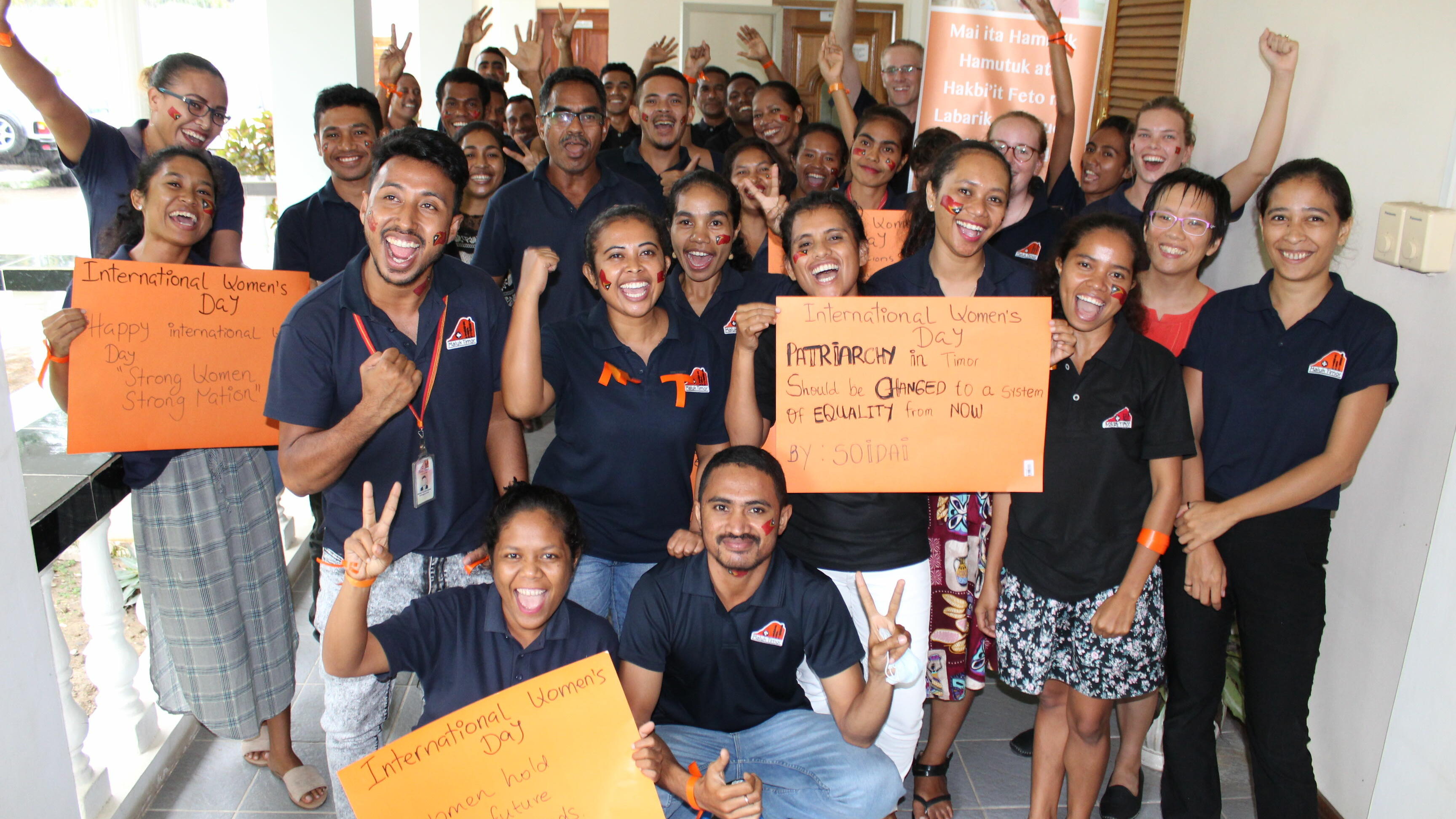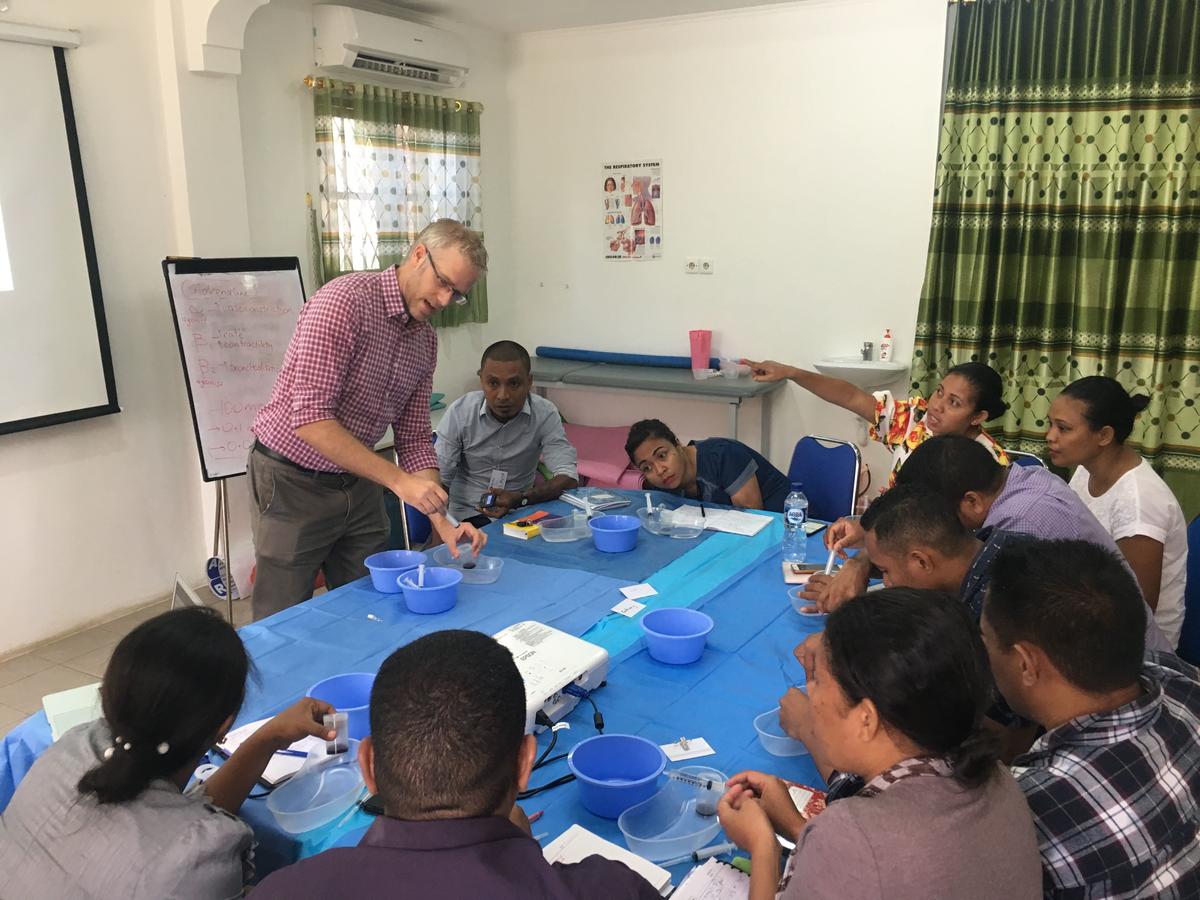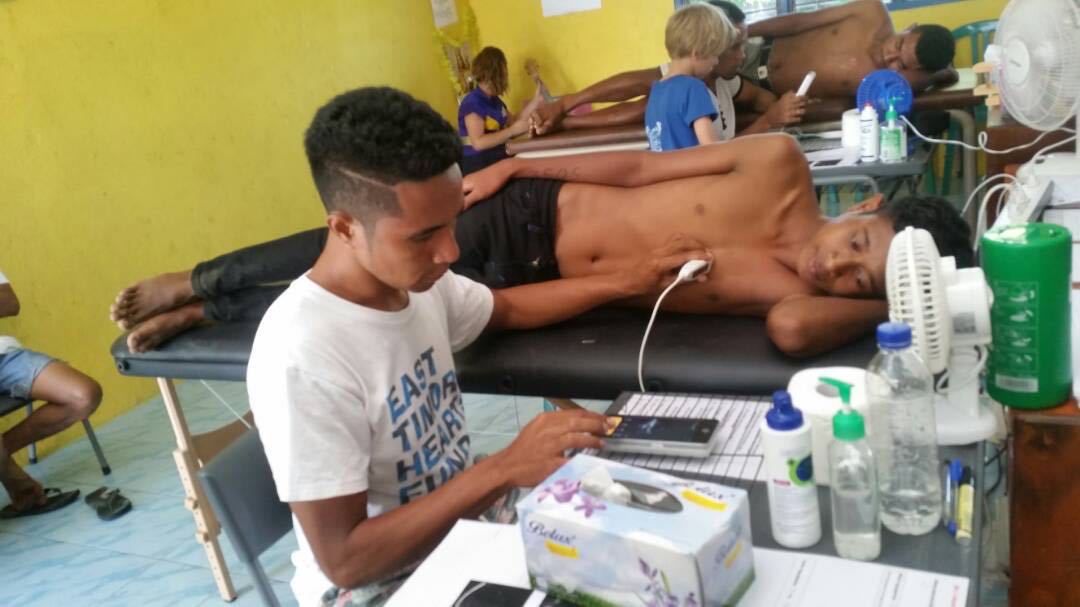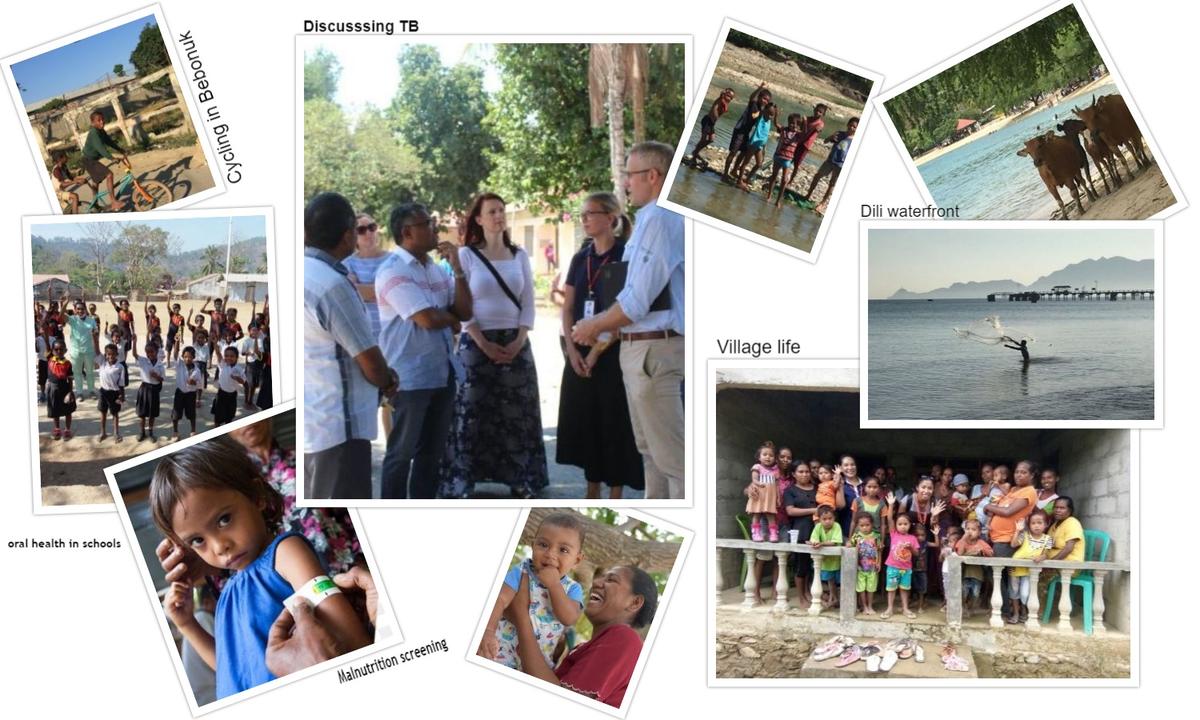
Five years ago I was sitting in LSTM, poring over thick-and-thin films looking for gametocytes. As a rural GP from Australia with hopes of future opportunities in health development, the DTM&H seemed like the ideal crash course to get me prepared. And so it proved to be.

By 2016 I had relocated my wife and four young children to Dili, Timor-Leste, to run a very busy NGO hospital on behalf of an Australian charity. Few people know the history of Timor-Leste: a former Portuguese colony at the eastern end of Indonesia that fought a bloody resistance against occupation before securing independence in 2002. As the Indonesians withdrew they destroyed three-quarters of the infrastructure and left a fledgling nation literally ablaze.
Timor-Leste, with a population of 1.3 million, has improved a lot in 17 years but it remains the 10thhungriest country in the world with perhaps the highest rates of tuberculosis outside of Africa and it continues to suffer from extraordinary shortages in all domains of health resourcing.
Our NGO hospital was carrying a third of the national caseload of TB and delivering around half of the HIV treatment for the whole country. Add to that the usual swathe of outpatient care, inpatient medicine, maternity services, malnutrition wards… there was plenty to do. When I arrived the hospital had only a handful of exhausted expat doctors remaining and all but one of them were due to finish their volunteer placement within months. So I called LSTM.

Three and half years later we’ve had nineteen DTM&H alumni pass through our NGO as medical or nursing volunteers. Our organisation – now rebranded as Maluk Timor – has changed its model to move away from service delivery to capacity-building. Timor-Leste has hundreds of government health centres and clinics offering free care but the challenge is to work with the Ministry of Health to build quality into those health services. Electricity and running water would be a good start. What good is a clinic with only a blood pressure cuff and half a dozen medicines? What good is a freshly-trained doctor – straight out of medical school – who is sent to practice independently without an internship, without further training or supervision, and without basic equipment or medicines?
We’re now delivering the only Family Medicine training here. We’re leading the way in finding and treating rheumatic heart disease. We’re at the front line of TB, HIV, oral health… and others. There’s so much to do, and we’ve been able to recruit the team to do it: fifty bright young Timorese, and a dozen or so international medical and nursing volunteers who support them.
The DTM&H turns out to the ideal preparation for work in Timor-Leste. It selects out the adventurist types who are prepared for almost anything. It furnishes them with an approach to solve real problems in real-time, right there in the field. It reinforces an ethical approach to health development and respect for our local partners and colleagues. It sets realistic expectations about how slow and frustrating this kind of work can be. We find we scarcely need to orientate our DTM&H alumni at all – they hit the ground running as they get off the plane.

I doubt whether LSTM even realises what an impact they are having in this tiny country on the other side of the world. Maluk Timor is helping transform the health system of a new nation using the lessons learned in far off Liverpool.
Dr Jeremy Beckett
Director - Maluk Timor
Rua Aidak Nurak, Comoro, Dili
I studied the DTM&H in 2014 and subsequently relocated to Timor-Leste in 2016. I've since become the CEO of a health development NGO called Maluk Timor. I was doing a count-back last week and I discovered that since 2016 we have found placements for eighteen graduates from the DTM&H here at Maluk Timor!
